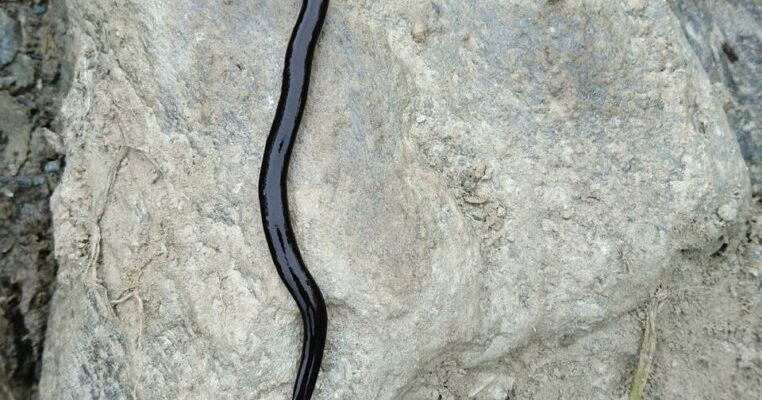
So, how do you deal with these bizarre-looking intruders? Honestly, the safest removal techniques for hammerhead worms are key to keeping your garden healthy while ensuring you don’t harm these creatures unnecessarily. Let me explain a few strategies that not only help you remove these worms effectively but also do it in a way that’s gentle and considerate.
Understanding Hammerhead Worms
Hammerhead worms, or *Bipalium kewense*, are native to tropical regions but have spread to many areas due to human activity. You might be wondering why these worms are even an issue. They prey on beneficial soil organisms like earthworms, which are crucial for soil health. If you’re cultivating plants, these worms can become a serious problem, undermining the ecosystem you’ve worked hard to build.
These worms can grow quite large, reaching up to a foot in length. Isn’t that wild? When disturbed, they may secrete a toxic substance, so handling them isn’t as simple as just picking them up. Instead, it’s important to be aware of how to safely manage their presence in your garden or yard.
Identifying Hammerhead Worms
Before you start any removal technique, you need to confirm that you’re dealing with a hammerhead worm. Here’s how to identify them:
- Shape: Their bodies are flat and elongated, resembling a ribbon.
- Head: The most distinctive feature is their hammer-like head. It’s wide and, well, hammer-shaped!
- Color: They typically vary in color from brown to black and may have stripes.
- Movement: Unlike regular earthworms, hammerhead worms glide over surfaces, often leaving a sticky trail.
Identifying these creatures correctly is the first step towards safe removal. If it looks like a hammerhead worm, it probably is, and it’s time to think about how to deal with it.
Safe Removal Techniques
Now that you’re familiar with what you’re looking for, let’s dive into some safe removal techniques. The goal is to extract these worms without causing harm to yourself or the environment.
1. Manual Removal
In some cases, it may be possible to remove them by hand. Always wear gloves to protect yourself from their toxic secretions. Here’s how to do it safely:
– **Tools:** Grab a clean pair of gloves and a small container (like a cup or jar).
– **Procedure:** Gently scoop up the worm and place it in the container. Make sure to do this carefully to minimize stress on the worm.
– **Relocation:** Once you have the worm in your container, you can place it in an area away from your garden, preferably in a wooded or damp area where it can thrive without causing harm elsewhere.
This method is direct and ensures you’re not leaving these creatures to fester in your garden.
2. Salt Treatment
If you’re dealing with a larger infestation and feel uncomfortable with manual removal, salt can be a powerful ally. Salt draws moisture from the worm’s body, which helps in the removal process. But here’s the key: use it sparingly and carefully.
– **Sprinkle:** Lightly sprinkle salt directly onto the worm.
– **Wait:** Allow it to sit for a few minutes before removing. You might see the worm becoming immobilized.
– **Dispose:** After the removal, ensure you dispose of the worm properly. This method is particularly effective but should be used as a last resort.
3. Boiling Water Method
Now, if you’re facing a serious hammerhead worm situation, boiling water can be quite effective. Here’s a step-by-step guide:
1. **Boil Water:** Bring a pot of water to a rolling boil.
2. **Pour:** Carefully pour the hot water over the worm. This should effectively eliminate the worm on contact.
3. **Repeat as Necessary:** For multiple worms, you might need to repeat this process.
This method is lethal, so make sure you’re only using it if you’re certain that removal is necessary.
Prevention Strategies
Once you’ve tackled the issue, you might be pondering how to prevent hammerhead worms from returning. It’s always easier to keep them out than to remove them.
– **Healthy Soil Practices:** Maintaining a robust ecosystem in your garden can deter these worms. Emphasizing biodiversity helps keep harmful species at bay.
– **Avoiding Overwatering:** Since these worms thrive in damp conditions, be mindful of how much water you’re using.
– **Regular Inspections:** Keeping an eye trained on your garden can help you spot any unwanted guests before they become a problem.
Building a strong foundation in your garden can make all the difference in keeping these creepy crawlers away.
Working with Pest Control Experts
If hammerhead worms become a recurring issue and you find yourself struggling to manage the situation, it might be time to call in the pros. Pest control specialists can offer solutions tailored specifically to your environment.
They’ll assess the situation and suggest strategies that are safe for both your plants and the local wildlife. This might feel like a big step, but sometimes it’s necessary for maintaining a healthy garden.
In summary, dealing with hammerhead worms can be unsettling, but it doesn’t have to be a nightmare scenario. By being informed and prepared, you can handle their removal safely and effectively. Remember, you have options! Whether you go for manual removal, use salt or boiling water, or decide to bring in experts, the key is to act thoughtfully.
With a little care and attention, you can keep your garden healthy and free from these peculiar invaders. Happy gardening!

